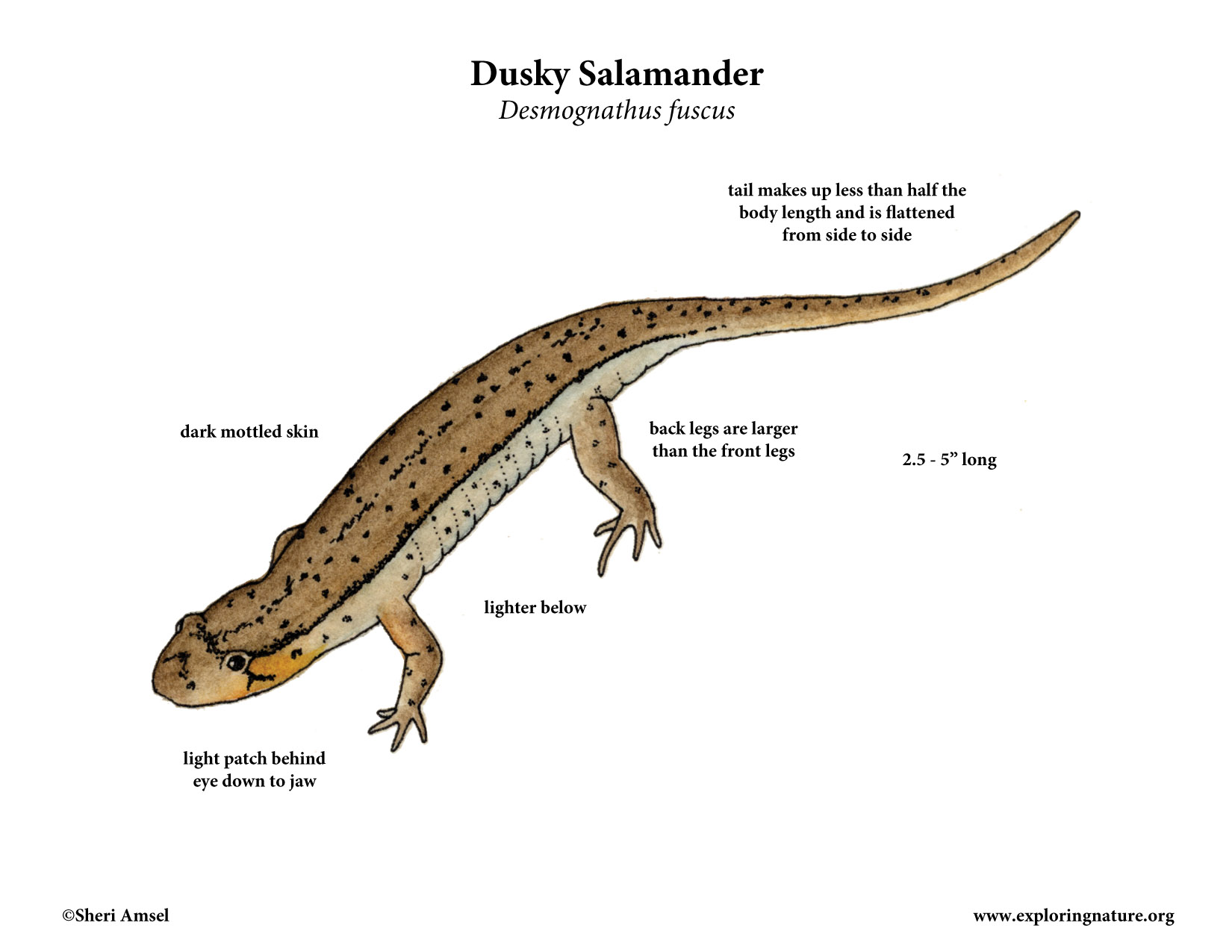

They are found in southeastern Canada, down the eastern coast down to North Carolina and west to Indiana, Kentucy and Tennessee.
They live around small streams, springs, and muddy areas in forested areas.
They have dark, mottled skin on the back and are lighter below. There is a lighter patch behind the eyes and down to the jaw. The tail makes up less than half the body length and is flattened from side to side (instead of rounded). The back legs are larger than the front legs. They can be up to five inches long.
They are active at night (nocturnal).
They eat worms, smailes, insects and other invertebrates.
Females lay several dozen eggs under rocks or forest debris near a stream or other water sources. She will guard the eggs until they hatch (in 5-11 weeks).
Kingdom: Animalia
Phylum: Chordata
Class: Amphibia
Order: Urodela
Family: Plethodontidae
Subfamily: Plethodontinae
Genus: Desmognathus
Species: fuscus
When you research information you must cite the reference. Citing for websites is different from citing from books, magazines and periodicals. The style of citing shown here is from the MLA Style Citations (Modern Language Association).
When citing a WEBSITE the general format is as follows.
Author Last Name, First Name(s). "Title: Subtitle of Part of Web Page, if appropriate." Title: Subtitle: Section of Page if appropriate. Sponsoring/Publishing Agency, If Given. Additional significant descriptive information. Date of Electronic Publication or other Date, such as Last Updated. Day Month Year of access < URL >.
Amsel, Sheri. "Salamander (Dusky)" Exploring Nature Educational Resource ©2005-2024. December 14, 2024
< http://www.exploringnature.org/db/view/Dusky-salamander >

